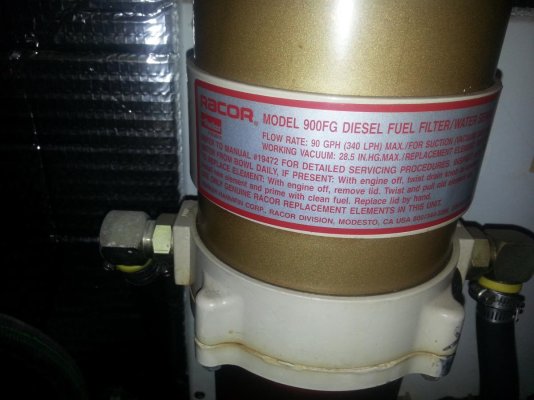bligh
Guru
Ok, So I have a 900FG separator for the main and a 500Fg separator for the genny.
Im not sure how to change the filters in them although I found a box of spares on board. I see I can unscrew the top and remove the filter, but I'm not sure that is a good idea as I don't want to mix the fuel on the dirty side of the filter with the clean fuel on the inside of the filter. If I drain the bowl, will that drain the filter area as well. In the drawing , I see a check valve of sorts with a ball in it. So I'm thinking if I drain the bowl, I wont be draining the filter.
Can someone walk me through the steps to properly change the filter in these units?
I did find directions on how to rebuild the units which I would like to do as ther is gunk on the inside of the bowls. At what intervals should this be done and what is a good source for the rebuild kits.
BTW I found a ball bearing in a drawer of the main saloon that looks an awful lot like the ball that should be in the filter. I set it aside as I think the PO may have taken it out, but I'm not sure as I have not dis assemble the unit yet.
Thanks!
Scott
Im not sure how to change the filters in them although I found a box of spares on board. I see I can unscrew the top and remove the filter, but I'm not sure that is a good idea as I don't want to mix the fuel on the dirty side of the filter with the clean fuel on the inside of the filter. If I drain the bowl, will that drain the filter area as well. In the drawing , I see a check valve of sorts with a ball in it. So I'm thinking if I drain the bowl, I wont be draining the filter.
Can someone walk me through the steps to properly change the filter in these units?
I did find directions on how to rebuild the units which I would like to do as ther is gunk on the inside of the bowls. At what intervals should this be done and what is a good source for the rebuild kits.
BTW I found a ball bearing in a drawer of the main saloon that looks an awful lot like the ball that should be in the filter. I set it aside as I think the PO may have taken it out, but I'm not sure as I have not dis assemble the unit yet.
Thanks!
Scott


